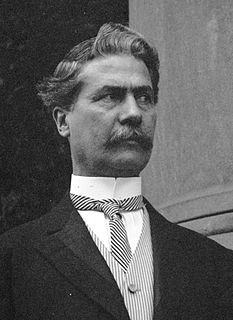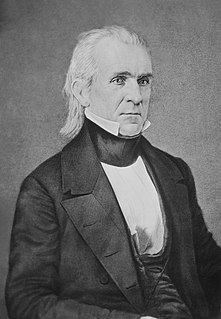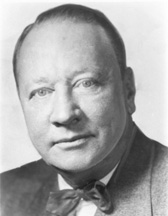
James Francis Byrnes was an American judge and politician from the state of South Carolina. A member of the Democratic Party, Byrnes served in Congress, the executive branch, and on the U.S. Supreme Court. He was also the 104th governor of South Carolina, making him one of the very few politicians to have served in the highest levels of all three branches of the American federal government while also being active in state government.

The 1978 United States Senate elections in the middle of Democratic President Jimmy Carter's term. Thirteen seats changed hands between parties, resulting in a net gain of three seats for the Republicans. Democrats nevertheless retained a 58–41 majority.

The 1968 United States Senate elections were elections for the United States Senate which coincided with the presidential election of the same year. Although Richard Nixon won the presidential election narrowly, the Republicans picked up five net seats in the Senate. Republicans would gain another seat after the election when Alaska Republican Ted Stevens was appointed to replace Democrat Bob Bartlett.

The 1954 United States Senate elections was a midterm election in the first term of Dwight D. Eisenhower's presidency. Eisenhower's Republican party lost a net of two seats to the Democratic opposition. This small change was just enough to give Democrats control of the chamber with the support of an Independent who caucused with them.

The United States Senate elections of 1932 coincided with Democrat Franklin D. Roosevelt's landslide victory over incumbent Herbert Hoover in the presidential election.

Coleman Livingston Blease was a South Carolina politician of the Democratic Party and perennial candidate who served as Governor of South Carolina from 1911 to 1915, and as a United States Senator from 1925 to 1931. Blease was the political heir of Benjamin Tillman. He led a political revolution in South Carolina by building a political base of white textile mill workers from the state's upountry region. He was notorious for playing on the prejudices of poor whites to gain their votes and was an unrepentant white supremacist. Ultimately, despite his political strength, Blease failed to pass any significant legislation while governor.

Elections to the United States House of Representatives for the 24th Congress were held in 1834 and 1835 during Andrew Jackson's second term as President of the United States.

The 1930 South Carolina United States Senate election was held on November 4, 1930 to select the U.S. Senator from the state of South Carolina. Incumbent Democratic Senator Coleman Livingston Blease was defeated in the Democratic primary by James F. Byrnes. He was unopposed in the general election to win a six-year term.

The 1942 South Carolina United States Senate election was held on November 3, 1942 to select the U.S. Senator from the state of South Carolina. Incumbent Democratic Senator Burnet R. Maybank defeated Eugene S. Blease in the Democratic primary and was unopposed in the general election to win a six-year term.

The 1918 South Carolina United States Senate election was held on November 5, 1918 simultaneously with the special senate election to select the U.S. Senator for a six-year term from the state of South Carolina. Nathaniel B. Dial won the Democratic primary and was unopposed in the general election to win the six-year term to the Senate.

The 1924 South Carolina United States Senate election was held on November 4, 1924 to select the U.S. Senator for a six-year term from the state of South Carolina. Coleman Livingston Blease won the Democratic primary and was unopposed in the general election to win the six-year term to the Senate.

Electoral history of Robert Byrd, senior United States Senator from West Virginia (1959–2010), President pro tempore of the United States Senate, Senate Majority and Minority Leader (1981–1987). He was also the longest-serving U.S. Senator in history, as well as the previous longest-serving member of Congress.

Electoral history of Lyndon B. Johnson, who served as the 36th president of the United States (1963–1969), the 37th vice president (1961–1963); and as a United States senator (1949–1961) and United States representative (1937–1949) from Texas.

Electoral history of Strom Thurmond, 103rd Governor of South Carolina (1947–1951), United States Senator from South Carolina, 1948 States' Rights Democrats presidential nominee and President pro tempore of the United States Senate.

Electoral history of Bob Barr, Republican Representative from Georgia (1995–2003) and Libertarian Party presidential nominee in 2008 election.

Electoral history of Ron Paul, Republican U.S. Representative from Texas, 1988 Libertarian Party Presidential nominee and candidate for the 2008 and 2012 Republican presidential nomination.

Electoral history of Lloyd Bentsen, United States Senator from Texas (1971-1993), United States Representative (1948-1955), United States Secretary of the Treasury (1993-1994), Democratic Party nominee for Vice President of the United States in 1988 and a candidate for 1976 Democratic presidential nomination

The 1932 United States Senate election in North Carolina was held on November 8, 1932. Interim Democratic Senator Cameron A. Morrison ran for election to a full term, but was defeated in the Democratic primary by Robert Rice Reynolds. Reynolds defeated Republican Jacob F. Newell in the general election.

William Richardson Timmons IV is an American attorney, entrepreneur and politician serving as the U.S. Representative for South Carolina's 4th congressional district since 2019. His district is in the heart of the Upstate and includes Greenville, Spartanburg, and most of their suburbs. A member of the Republican Party, Timmons served as the South Carolina State Senator from the 6th district from 2016 to 2018.
There were three special elections to the United States Senate in 1941 during the 77th United States Congress.

















